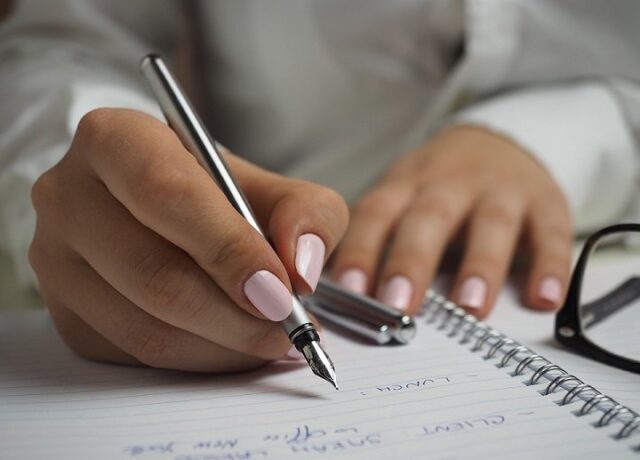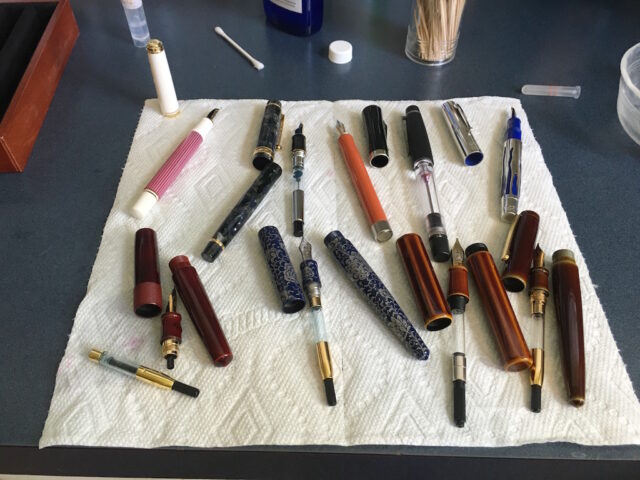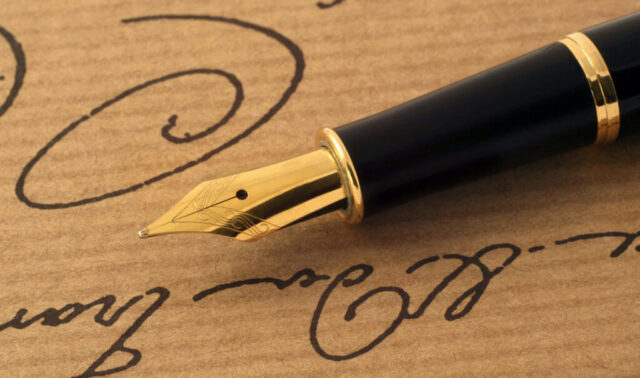Have you always wanted to add flair to your writing but didn’t know where to start? If so, why not consider getting a fancy new fountain pen? Fountain pens are writing tools that you can use to make your writing style more personalized.
This produces impressive handwritten text that leaves an impression on readers because they add a creative touch of flair and style to your writing. They are unique practical tools that can be used to elevate handwriting.
This article will help you learn everything about fountain pens, from the ink types and nib sizes available to discover the best way to write with a fountain pen.
What Is A Fountain Pen?

A fountain pen is an elegant writing tool that uses ‘fountain’ technology to draw ink from a reservoir in a pen. When drawn, this ink can leave behind a trace of beautiful writing because of its sophisticated design. Most fountain pens consist of the nib, barrel, and feed system.
The pen’s tip is known as the ‘nib,’ and the middle part is the ‘barrel,’ where the ink is stored until you activate the ‘feed system.’ The feed system helps regulate how much ink gets delivered onto the paper as you write giving you sophisticated penmanship.
Cross pens are especially well-known for their style and quality, as they are designed with sophistication in mind. If cross pens interest you, you can click here to find the best one for your writing sessions.
You can also get creative with your fountain pens by using different ink colors and experimenting with different kinds of writing, such as lettering, calligraphy, and everyday notes.
Different Types Of Fountain Pens
Writing with a fountain pen can be an excellent way to express yourself, but before you do that, you need to know about the different types of fountain pens available on the market and what each can offer you.
You can choose from three main types: cartridge-filled pens, piston-filled, and eyedropper-filled fountain pens. You can learn more about them in detail below:
Cartridge-filled pens are convenient because they allow fast and easy ink refilling. These pens also consist of disposable cartridges that can be easily swapped out once the ink runs, making them an excellent choice for writers who want a low-maintenance option that doesn’t require much work.
Piston-filled pens have a higher ink capacity and are perfect for writers who write a lot. You won’t have to refill your fountain pens as you write constantly, and they have a piston mechanism, allowing writers to draw ink from a bottle directly into the pen’s reservoir. This pen type can be more challenging to clean, but the added ink capacity makes it worth it.
Eyedropper-filled pens are for writers who want maximum artistic control over their inks. These pens use an eyedropper to fill the reservoir, allowing greater ink color customization and consistency. These are best for writers experimenting with different inks and ink mixtures to create unique effects on their paper.
How To Use A Fountain Pen

Once you have selected the best pen and ink for your writing, you can start practicing. To get the best results as you write, consider the following helpful steps:
Use The Right Paper
Before you start writing, ensure you have the correct type of paper. Most paper types can be used with a fountain pen. But using regular bond paper can cause the ink to bleed and feather, affecting the readability of your texts.
Ink bleeding happens if the paper you’re using is too thin or porous, so the ink seeps through the paper and bleeds, creating streaks that ruin the appearance of your letters. Another issue that can arise from using absorbent paper is ink feathering.
Feathering happens when the ink spreads on the paper and creates fuzzy edges around the letters. To avoid these issues, choose a thick paper with a tight weave.
It’s best to look for papers labeled explicitly as ‘fountain pen friendly’ or ‘inkjet compatible,’ as these papers are specifically designed to resist bleeding and feathering and provide the best surface for your fountain pen writing.
Tilt The Pen At 45 Degrees
Once you have the correct paper, pick up your fountain pen and start writing. In doing so, tilt the pen at an angle of 45°. This angle ensures that your words are written evenly. This also gives you smoother movements as you write and can help you create beautiful texts.
Apply Pressure
A fountain pen will only leak or release ink if you put pressure on the pen’s nib, and the pressure you apply when writing can determine the size and thickness of your writing. It can also determine how significant your letters loop as the ink moves from the nib.
If you want to adjust the thickness of your writing, change the amount of pressure you apply slightly as you write.
For example, if you want thicker lines, add more pressure as you write, and ease up on the force for thinner lines. You may try many different writing styles because the nib’s unique writing point allows for smoother and more consistent curves than your standard ballpoint pen.
Write With Different Colors
Writers who want to add a dash of creativity to their writing can use different colored inks. Check out the local stores in your area to see if they carry the ink color you need, as they can vary from vivid to subtle hues, giving you more to work with.
Combining different ink colors with your fountain pen can create a distinctive look as writing.
How To Take Care Of A Fountain Pen

Once you own a fountain pen, you must treasure it and ensure that you care for it properly. You can use the following tips for maintenance:
When the fountain pen is unused, keep the cap on and store the pen upright.
Clean your pen regularly, as this will prevent dried ink from clogging up the nib and stopping the ink flow as you write.
Follow instructions for using, storing, and cleaning your fountain pen carefully to ensure it stays in good condition.
Use the correct ink type with your fountain pen, as some can be harsh and corrosive. Over time, this can eventually damage the pen’s nib or feed system, so look for high-quality, pH-neutral inks specifically designed for fountain pens.
Be careful not to drop or bump your pen, as this can damage the delicate nib and feed system. If your pen does get damaged, it’s essential to take it to a professional for repair rather than trying to fix it yourself.
You can elevate your handwriting by taking care of your fountain pen and employing the proper techniques mentioned in this article. So practice writing with your fountain pen and use various pressure levels and speeds to create new writing styles. This will also help you get comfortable with how the fountain pen feels in your hand as you write.
Armed with these tips, you’ll become more accustomed to writing with a fountain pen.
Conclusion
With all these tips and tricks, you’ll be one step closer to better handwriting. Writing with a fountain pen isn’t just about the finished product but also about having fun and style. Whether you’re looking to express yourself through journaling or writing letters artistically, writing with a fountain pen may come with a learning curve, but it’s well worth the practice.










